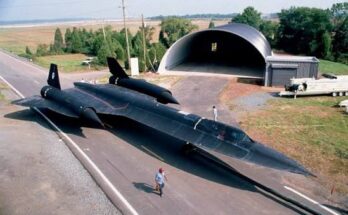The Tenerife Airport Disaster: A Tragic Collision That Changed Aviation Forever
On March 27, 1977, the deadliest accident in aviation history occurred at Los Rodeos Airport (now Tenerife North Airport) in the Canary Islands, Spain. Two Boeing 747 jumbo jets—one operated by KLM and the other by Pan American World Airways—collided on the fog-covered runway, resulting in the deaths of 583 people. The disaster was caused by a tragic combination of miscommunication, poor visibility, and human error. This catastrophic event reshaped aviation safety standards and communication protocols, ensuring that such a tragedy would never happen again.

Background: A Chain of Events Leading to Disaster
The Tenerife airport disaster was not caused by a single failure but rather a series of unfortunate events that set the stage for catastrophe. The tragedy was rooted in a terrorist incident that forced several flights, including KLM Flight 4805 and Pan Am Flight 1736, to be diverted to the small, congested Los Rodeos Airport on Tenerife.
A bomb explosion at Gran Canaria Airport earlier that day resulted in flight diversions, causing Los Rodeos Airport to be overwhelmed with incoming aircraft. With limited parking space, many planes, including the two 747s involved in the crash, had to wait for clearance to depart. However, worsening weather conditions and communication misunderstandings soon turned the situation into an impending disaster.
The Collision: Moments Before Impact
As fog rolled in, reducing visibility on the runway, the air traffic controllers faced immense challenges in coordinating aircraft movements. KLM Flight 4805, piloted by Captain Jacob Veldhuyzen van Zanten, had refueled and was preparing for takeoff. Meanwhile, Pan Am Flight 1736, commanded by Captain Victor Grubbs, was taxiing down the same runway, searching for its designated exit to clear the path for the KLM flight.
However, miscommunication between the KLM crew, Pan Am pilots, and air traffic control led to a deadly misunderstanding. The KLM captain mistakenly believed he had received takeoff clearance and accelerated down the runway. At the same time, the Pan Am 747, still taxiing, emerged from the thick fog—directly in the KLM aircraft’s path.

Impact and Destruction
By the time the Pan Am crew saw the approaching KLM jet, it was too late to move out of the way. Captain Grubbs desperately tried to accelerate and swerve off the runway, but the massive 747 could not clear the oncoming aircraft in time.
The KLM jet attempted to lift off prematurely, its nose rising into the air, but it was still too low. The lower fuselage struck the Pan Am aircraft at high speed, tearing through its upper deck and causing an instant explosion. The KLM aircraft crashed back onto the runway a few hundred feet away, bursting into flames. All 248 people aboard the KLM flight perished in the fire.
On the Pan Am jet, 335 passengers and crew were killed, many due to the impact and ensuing fire. However, 61 people miraculously survived, escaping through the aircraft’s emergency exits before the flames engulfed the cabin.
Causes of the Disaster
The Tenerife airport disaster was attributed to multiple factors, including:
1. Miscommunication in Radio Transmissions: Due to overlapping radio transmissions, the KLM pilots misunderstood the air traffic controller’s instructions, believing they had been cleared for takeoff when, in reality, they had not.
2. Fog and Poor Visibility: The thick fog obscured the view of both aircraft, making it impossible for either crew to see each other in time.
3. Human Error and Pilot Decision-Making: The KLM captain, a highly respected and experienced pilot, made a fatal assumption by proceeding with takeoff without explicit clearance. His decision, likely influenced by delays and time pressure, ultimately led to the crash.

4. Airport Congestion and Lack of Ground Radar: Los Rodeos Airport lacked modern ground radar, which could have helped air traffic controllers detect the dangerous situation developing on the runway.
Aftermath and Aviation Safety Reforms
The Tenerife airport disaster shocked the aviation world and led to sweeping changes in air traffic control and pilot communication protocols. Some of the most significant reforms included:
• Standardized Phraseology in Radio Communication: After the crash, the International Civil Aviation Organization (ICAO) mandated clear and unambiguous communication. The phrases “takeoff” and “depart” are now strictly regulated to prevent misunderstandings.
• Cockpit Resource Management (CRM): Pilot training programs were redesigned to emphasize teamwork, assertiveness, and proper communication among crew members. This change ensures that no single pilot’s decision goes unchallenged if uncertainty arises.
• Improved Ground Radar Systems: Airports worldwide implemented advanced ground radar to track aircraft movements even in poor visibility.
• Enhanced Air Traffic Control Procedures: Controllers were trained to give explicit, unambiguous instructions and confirm that pilots fully understood their clearances before proceeding with critical maneuvers.
Legacy of the Disaster
Although the Tenerife airport disaster remains the deadliest aviation accident in history, it became a turning point for global aviation safety. The lessons learned from this tragedy have made modern air travel significantly safer.
Survivors of the crash, as well as the families of the victims, continue to honor the memory of those lost, ensuring that their deaths were not in vain. Today, the aviation industry operates with heightened awareness of communication clarity, human factors, and safety protocols—legacies directly linked to the tragic events of March 27, 1977.
Conclusion
The Tenerife airport disaster was a heartbreaking example of how a series of small errors can lead to an unimaginable tragedy. The loss of 583 lives served as a catalyst for change, leading to essential improvements in aviation safety that continue to protect passengers today.
Though the scars of the disaster remain, the advancements in communication, pilot training, and air traffic control have ensured that such a tragedy is far less likely to happen again. The lessons of Tenerife serve as a solemn reminder of the importance of precision, teamwork, and safety in the skies.


